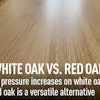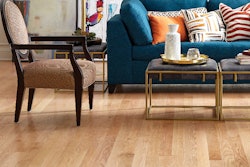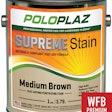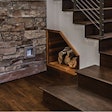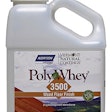Transparency and authenticity are increasingly important and expected in every industry. From a desire to know where our food comes from to where products are made and the working conditions of laborers, the public holds corporations and manufacturers to a high standard of accountability in the age of social media, 24-hour news and social responsibility. The hardwood flooring industry faces the same scrutiny—as we should. Our customers are increasingly asking questions about where our wood comes from, whether our products are sustainable and (especially recently) how it might affect their family's health. I believe the best way to ensure the quality, sustainability and safety of flooring is through third-party testing and validation.
Only third-party testing and certifications can prove that products meet the highest criteria.
Manufacturers can tout green practices, promise durability and list health codes met by their products, but only third-party testing and certifications can prove that products meet the highest criteria. Obtaining certifications is a significant investment for the manufacturer, and prices for certified products reflect that investment. But what exactly are buyers getting for that premium? What can you tell customers to explain the higher cost of certified products?
Certifications Explained
First, everyone in our industry should understand the most common certifications in our industry. Two that apply to the wood itself and address sustainable forestry practices are the Forest Stewardship Council and the Sustainable Forestry Initiative. Both of these certifications indicate the wood used to make the flooring was harvested sustainably. The concept of responsible forest management includes ideas such as protecting fragile ecosystems, respecting native cultures and economies, and restricting clear-cutting and pesticide use. Foresters meeting these certifications are responsible for ensuring the wood really came from the forest that was certified. For the flooring to be labeled with these certifications, the wood must follow a chain of custody all the way from forest to flooring.
FSC is stricter in terms of how much clear-cutting is allowed as well as use of pesticides, and experts disagree on the advantages and disadvantages of the two certifications. Because FSC is harder to achieve, it's harder to find FSC-certified wood flooring, but both the FSC and SFI have online product databases to help locate their products.
Beyond certifying the wood itself, a certification like SCS Global's FloorScore intends to assure protection for installers and their customers during installation, the life of the product and the removal process by certifying that the product meets healthy emissions standards for indoor air quality.
What's Behind Certifications?
Certifications and validations increase the cost of the product. The added cost of each step of the process is an investment for manufacturers and foresters, but the thorough evaluation it takes to receive the certification as well as the stamp of approval from an official source provides builders and contractors with assurance that they are providing customers with products that really meet green standards.
"Third-party laboratory testing ensures that testing is unbiased and follows the specified testing method," says Jenilee Napalan, SCS Global flooring program manager.
Third-party organizations should do several things to ensure that, including maintaining separation between the certification body and the testing laboratory. This ensures all testing is done to meet standards and not to make a profit.
The time, effort and resources behind that logo are extensive.
Although on the final certified product there is simply a logo, the time, effort and resources behind that logo are extensive. With FloorScore, for example, SCS reviews manufacturers' products and sites to confirm they meet the requirements of the Indoor Air Quality Product Performance Standard for Building Materials, CDPH/EHLB Standard Method V1.1 and California 01350. All materials and ingredients used in the manufacturing of the finished goods are tested, including adhesives, resins, particleboard cores and surface finishes.
In addition to product testing, the manufacturing sites must undergo an on-site audit, and FloorScore certification requires annual re-evaluation of the certified products and the quality management system of the manufacturing sites.
Long-Term Perspective
Although many companies these days will tout their products' green qualities, the only way to be certain of environmental responsibility and providing customers with products that are safe for their health is to choose products with impartial certifications. A commitment to doing this demonstrates your dedication to doing business based on more than just the bottom line.












